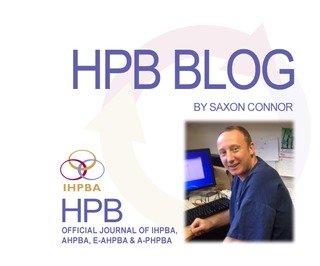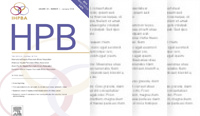International Hepato-Pancreato-Biliary Association
HPB Blog, September 2017

A wealth of technical tips in September’s issue of HPB
It seems each time I sit down to write an HPB blog, I require more and more time as the number of papers that draw me in to read the whole article, continues to increase. This month’s issue has a strong technical theme spread across all the core subspecialties. There is a systematic review by Amerongen et al that raises significant concerns about the use of RFA for colorectal liver metastases. It shows significantly higher rates of local, intrahepatic and extrahepatic recurrences with reduced disease free and overall survival. This data suggest that RFA should not be used where surgery is possible. In the liver transplant field, Robertson et al have performed a randomised pilot study looking at the effect of remote ischemic preconditioning for liver transplant recipients. Although feasible it remains unclear whether it will lead to better outcomes. For liver resection there are two papers dealing with technical issues. A systematic review from Zhou et al summarises the available data on the outcomes of IVC resection for a variety of hepatic malignancies. Published data suggest a perioperative mortality of 5% and 5 year overall survival irrespective of tumour type of 33%. The second technical hepatic paper by Torzilli et al describes the outcomes of a parenchymal preserving approach to tumours with complex relationship to major portal pedicles or hepatic veins were treated. This article challenges the basic concept of maintain “a venous outflow” to the preserved hepatic remnant via traditional means. This is a fascinating paper that should be a must read for liver surgeons looking to expand their armamentarium with parenchymal preserving surgery. In the field of the pancreas, two papers address technical issues, Tanaka et al provide the answer as to whether the splenic vein needs reconstructed following PV-SMV reconstruction during pancreaticoduodenectomy while the group from Johns Hopkins describe the value of a negative pressure dressing for patients at high risk of superficial surgical site infection post pancreaticoduodenectomy. The lesson from this paper is also about the value of using an evidence based approach to standardise perioperative care and this is further demonstrated by the group from Toronto who showed significant improvement in outcomes by implementing a standardised clinical pathway following pancreaticoduodenectomy.
Leaving technical issues behind, a systematic review by Ghindi et al demonstrates the benefit of adjuvant chemotherapy for biliary tract cancers while Margonis et al highlight that increased kinetic growth in the late phase of liver regeneration as a predictor of increased risk of intrahepatic recurrence. This may have implications for follow up but also timing of adjuvant therapies. Finally, I would like to finish highlighting the paper by Smith et al. This paper set out to investigate the reason for racial disparity in access to liver transplantation among African Americans. Although at first glance this may seem of interest to only those in America it seems to me that lessons learnt from this paper could be applied to many nations especially with indigenous populations who often also suffer the same issues of equity of access to health care.
Corporate Partners
If you are interested in becoming a Corporate Partner of the IHBPA please contact industry@ihpba.org
Find out more


